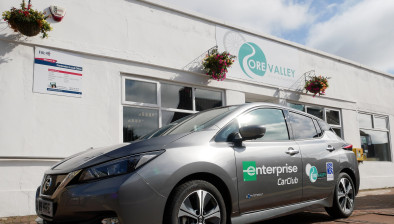Ore Valley Housing Association closes on £4.6million green energy project
 Ore Valley Housing Association (OVHA) has closed a deal with the European Energy Efficiency Fund (eeef) on a £4.6 million project to develop wind turbines and replace 200 heating systems for OVHA homes.
Ore Valley Housing Association (OVHA) has closed a deal with the European Energy Efficiency Fund (eeef) on a £4.6 million project to develop wind turbines and replace 200 heating systems for OVHA homes.
This is eeef’s first community based transaction within the UK and the result of a four-year long co-operative effort between the European funding group and OVHA.
The project has three financing parties: Cardenden Heat and Power (CHAP), a subsidiary of OVHA; the Renewable Energy Investment Fund (REIF) delivered by Scottish Investment Bank; and eeef.
The on-shore wind turbines will be located at sites within Fife and are being provided by a market leading supplier, Enercon. With construction work already in operation at the Dundonald, Cardenden site, the turbines are projected to be up and running, and providing energy by March 2017.
Ofgem will be providing guaranteed funding (feed in tariff) for 20 years, and the turbines will also sell their renewable energy back to the National Grid.
The wind project will contribute to OVHA’s Community Investment Plan.
Andrew Saunders, CEO of OVHA who leads the project development, said: “This project is a good example of a collaborative and innovative approach to address both fuel poverty and make an active contribution to increase the share of renewable energy in the overall electricity mix in Scotland, whilst providing a continuing financial benefit to the local community.”
Paul Wheelhouse, Scottish Government minister for business, innovation and energy, said: “This £4.6 million project will enable the development, construction and operation of onshore wind turbines in Fife. It is an excellent example of joint working between community organisations in the local area, eeef, and the Scottish Government, which will provide funds through our Renewable Energy Investment Fund. I am delighted this project further contributes to that vision and I am also pleased to see it delivering boiler replacements for 200 local households.”









